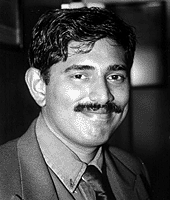 |
 |
Julian Matthews, Kuala Lumpur
Malaysia Develops Multipoint
Video-Conferencing System
Malaysia has successfully tested a desktop video-conferencing system on a satellite-based wide area network (WAN), which its makers claim is the world’s first multipoint-to-multipoint video-conferencing system.
“The link-up was fast, and had smooth full motion video transmission in real-time without any of the timelags and robotic movements associated with conventional systems,” said researcher Sureswaran Ramadass. Sureswaran heads the collaborative research team of the Science University of Malaysia in Penang (USM) and local network research outfit Multimedia Research Lab Sdn Bhd (Mlabs; www.mlabs.com.my) which invented the Multimedia Conferencing System (MCS).
The test took place in February between Measat Broadcast Network Systems Sdn Bhd’s Astro broadcast complex, near Kuala Lumpur and its office in Kota Kinabalu in the eastern state of Sabah on a 1Mbps satellite link-up. Astro is the country’s only satellite pay-TV operator.
Unlimited Interaction
Unlike typical video-conferencing systems which allow point-to-point or point-to-multipoint connections, MCS offers unlimited multipoint-to-multipoint interaction. “MCS was designed to fit into any existing LAN environment. It is also software-based and uses non-proprietary hardware,” said Sureswaran.
MCS allows up to 60 users per server and is scalable. A conference can have an unlimited number of participants by simply increasing the number of servers. Sureswaran said that the product’s superiority is its ability to maintain a constant bandwidth of 250kbps even when additional servers and users are added on to the conference.
 Sureswaran Ramadass |
“MCS simultaneously transmits two 16-bit true color pictures onto the user’s desktop at up to 30 frames per second without eroding the bandwidth,” said Sureswaran. A third picture on the user’s screen is that of the user.
The system utilizes a conference control criteria called Chairman Continuous Presence (C2P) allowing the chairman to be always “active” while one of the participants is active at the same time. Participants can take turns among themselves to be the active site during a conference.
MCS also allows video streaming of VHS movies and recorded meetings. The MCS supports all local and wide area networks that are Internet protocol (IP) based, including Ethernet, token ring, frame relay, ATM, FDDI and ISDN. It also supports common operating system environments such as Windows 95 and Unix.
Sureswaran said the product has been progressively developed and improved since 1993 when the team was first researching the possibility of running high quality video-conferencing on a shared Ethernet bandwidth.
The end result was MCS v4.0, based on an open and distributed architecture which makes it independent of proprietary hardware and is pluggable into any IP-based network.
MCS has been endorsed by Borko Furht, the director of the Multimedia Laboratory of Florida Atlantic University, US, as being “two generations” ahead of others available in the market today.
Sureswaran said the entirely locally-developed system is priced at 65% less than competing video-conferencing systems for similar number of users.